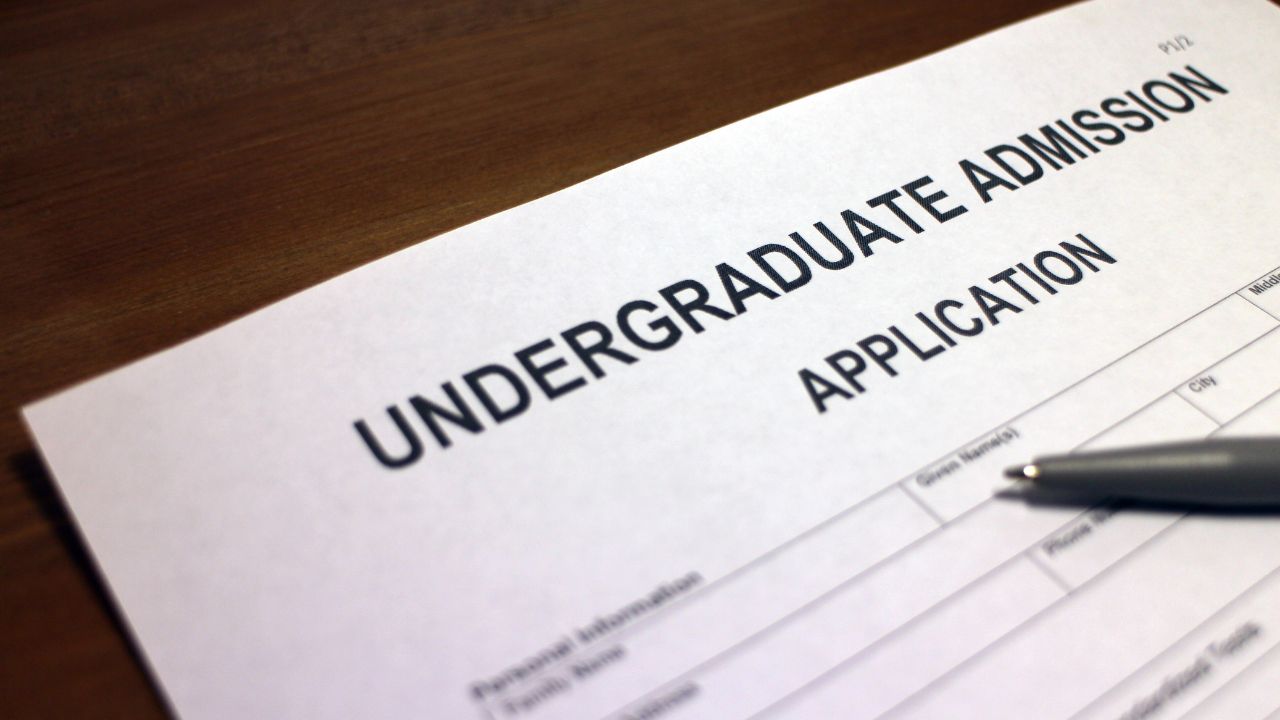Table of Contents
Welcome to our comprehensive guide on IB Physics IA! If you’re an International Baccalaureate student tackling your Physics Internal Assessment, then you’re in the right place. This blog post will provide you with all the information and tips you need to excel in your IB Physics IA project.
The IB Physics IA is a chance for students to showcase their scientific skills and knowledge while conducting independent research. It’s an opportunity to explore a topic of interest within the realm of physics and apply what you’ve learned throughout your course. From developing a research question to presenting your findings, this guide will walk you through each step of the process.
We understand that embarking on such a project can be daunting, but fear not! With proper planning, organization, and attention to detail, you can create an outstanding IB Physics IA that impresses both your peers and examiners alike. So let’s dive into the world of IB Physics IAs and uncover how to make yours shine!
But first things first – let’s familiarize ourselves with the criteria used for assessing these projects. Understanding what is expected from you will help set clear goals for success in your endeavor.
Understanding the Criteria for IB Physics IA
When it comes to the IB Physics IA, understanding the criteria is crucial for success. The criteria outline what examiners are looking for and how they will assess your work. Let’s take a closer look at each criterion.
Criterion A focuses on knowledge and understanding of physics concepts. You need to demonstrate a solid grasp of relevant theories and principles.
Criterion B assesses your investigative skills. This includes formulating a research question, designing experiments or simulations, and analyzing data accurately.
Criterion C examines communication skills. Your report should be well-structured, with clear explanations of the methods used, results obtained, and conclusions drawn.
Criterion D evaluates your personal engagement with the project. Show evidence of independent thinking, curiosity, and enthusiasm in exploring your chosen topic.
Remember that achieving high marks across all four criteria is essential for a strong IA grade. Make sure you address each criterion thoroughly in your work!
Now that we have explored the criteria, let’s move on to choosing a topic and research question – an important step in creating an outstanding IB Physics IA!
Also Read: CAMBRIDGE VS IB-MYP
Choosing a Topic and Research Question
When it comes to your IB Physics IA, choosing the right topic and research question is crucial. This is your chance to explore an area of physics that interests you and showcase your understanding of the subject. So, how do you go about selecting the perfect topic?
Think about what aspect of physics captivates you the most. Is it mechanics? Thermodynamics? Electricity and magnetism? Narrowing down your focus will help you delve deeper into a specific area.
Next, consider real-world applications or current advancements in physics. Is there a particular phenomenon or technology that intrigues you? Exploring these topics can make your IA more relevant and engaging.
Once you have identified potential areas of interest, brainstorm possible research questions. These should be specific enough to investigate within the constraints of an IA but broad enough to allow for meaningful experimentation or simulation.
Remember to choose a research question that aligns with both your interests and available resources. Consider if data collection will be feasible within school facilities or if simulations can adequately represent experimental conditions.
Selecting a compelling topic and well-defined research question is essential for conducting a successful IB Physics IA project. Take time to explore various possibilities before making your final decision!
Planning and Conducting Experiments/Simulations
Planning and conducting experiments or simulations is a crucial step in the IB Physics IA process. This is where you put your research question into action and gather data to support your investigation.
Before diving into the experimentation phase, it’s important to carefully plan out your procedures. Consider what variables you will be examining and how they will be controlled throughout the experiment. Think about the equipment and materials needed, as well as any safety precautions that need to be taken.
Once you have a solid plan in place, it’s time to conduct your experiments or simulations. This may involve setting up a physical apparatus, running computer simulations, or even collecting data from existing sources. Whatever method you choose, make sure it aligns with your research question and provides meaningful results.
During this stage, accuracy and precision are key. Take careful measurements and record all relevant data points accurately. Pay attention to any unexpected observations or outliers that could impact your analysis later on.
As you progress through the experiment or simulation, don’t hesitate to make adjustments if necessary. Sometimes things don’t go according to plan, but that doesn’t mean all is lost! Adaptability is an essential skill for any scientist.
Remember that documentation is just as important as execution when it comes to planning and conducting experiments/simulations for your IB Physics IA project. Keep detailed records of each step taken so that anyone reading your report can easily understand what was done.
Data Collection and Analysis
Once you have conducted your experiments or simulations for your IB Physics IA, it’s time to collect and analyze the data. This phase is crucial as it allows you to draw meaningful conclusions from your findings.
To ensure accurate data collection, make sure that you record measurements and observations carefully. Use appropriate tools such as sensors or probes to gather quantitative data, and don’t forget about qualitative information which can provide valuable insights.
Once the data has been collected, organize it in a clear and systematic manner. You may choose to use tables, graphs, or charts depending on the nature of your research question. Remember that visual representations can often convey information more effectively than raw numbers.
Next comes the analysis stage where you interpret the data to uncover patterns, trends, or relationships. This could involve calculations using formulas or applying statistical methods such as mean values or standard deviations.
During the analysis process, be open-minded and consider different perspectives. Look for any anomalies or outliers that may affect your results and think critically about possible sources of error.
Link your findings back to your research question and assess whether they support or refute your hypothesis. Discuss any limitations of your study that could have influenced the outcomes.
By following these steps in data collection and analysis for your IB Physics IA project, you will be able to present a robust investigation with reliable conclusions based on evidence obtained through sound scientific practices.
Presenting Findings and Drawing Conclusions
After all the hard work you’ve put into conducting experiments and collecting data, it’s time to present your findings and draw conclusions. This is a crucial part of your IB Physics IA, as it showcases your ability to analyze data and make connections between theory and evidence.
When presenting your findings, be sure to use clear and concise language. Avoid jargon or technical terms that may confuse the reader. Use graphs, charts, or diagrams to visually represent your data – this can help convey complex information in a more accessible way.
As you analyze your data, look for patterns or trends that emerge. Are there any correlations? Do certain variables have a significant impact on the outcome? Be thorough in your analysis but also remember to stay focused on answering your research question.
Drawing conclusions requires careful consideration of the evidence you have collected. Based on your analysis, what can you confidently say about the relationship between variables? Does it support or contradict existing theories? Make sure to explain how these conclusions align with scientific principles.
Remember that drawing conclusions is not about personal opinions; it should be based solely on the evidence presented. Your job is to objectively interpret the results and provide logical explanations for them.
Tips for Writing a Successful IB Physics IA
Writing an IB Physics IA can be a challenging task, but with the right approach and preparation, you can excel in showcasing your knowledge and skills. Here are some valuable tips to help you craft a successful IA:
1. Choose a topic that ignites your curiosity: Selecting a captivating research question will not only make the process more enjoyable but also increase your motivation to delve deeper into the subject matter.
2. Conduct thorough background research: Before diving into experiments or simulations, ensure you have a strong understanding of existing theories and studies related to your topic. This will provide context and enable you to design well-informed investigations.
3. Plan meticulously: Develop a clear plan outlining the steps you need to take throughout the project. This includes identifying variables, designing procedures, and determining data collection methods.
4. Pay attention to detail during experimentation: Ensure that all experimental conditions are controlled precisely, measurements are accurate, and any sources of error are identified and addressed appropriately.
5. Analyze data critically: Use appropriate statistical analysis techniques to interpret your findings objectively. Graphs, charts, tables, and mathematical models can enhance clarity in presenting results.
6. Draw insightful conclusions: Based on your analysis of data collected from experiments or simulations, draw meaningful conclusions supported by evidence from reliable sources.
7. Explore real-world applications: Discuss how your findings relate to everyday life or potential advancements in physics-related fields; this demonstrates the significance of your research beyond academic boundaries.
8. Communicate effectively through writing style & structure : Adopta concise yet precise writing style while adhering to proper grammar conventions. Avoid excessive jargon,but include relevant scientific terminology where necessary. Organize information logically using headings,and maintain coherence between paragraphs. Ensure that each section flows smoothly into the next,guiding readers through your thought process effortlessly.
9. Seek feedback from peers and teachers : Sharing drafts with classmates or seeking guidance from teachers can provide valuable insights and suggestions for improvement. Consider their perspectives and implement constructive feedback.
Common Mistakes to Avoid
- Lack of Proper Planning: One common mistake students make is diving into their IB Physics IA without a clear plan in place. It’s crucial to spend time brainstorming ideas, developing a research question, and creating an experimental or simulation design.
2. Insufficient Data Collection: Another pitfall is not collecting enough data to support your findings. Make sure you gather enough measurements or observations to ensure the statistical significance and reliability of your results.
3. Poor Experimental Design: A flawed experimental design can negatively impact the validity of your IA. Ensure that you have controlled variables, appropriate equipment, and accurate measurement techniques in place.
4. Inadequate Analysis: Merely presenting raw data without proper analysis is another misstep to avoid. Use relevant mathematical calculations, graphs, and diagrams to interpret and analyze your data effectively.
5. Neglecting Uncertainties: Failing to address uncertainties associated with measurements undermines the rigor of your IA. Include error bars on graphs or discuss sources of uncertainty when analyzing results.
6. Lack of Clarity in Communication: Communicating complex scientific concepts clearly is essential for success in the IB Physics IA. Avoid using jargon without explanation and strive for concise yet comprehensive explanations throughout your report.
7. Finishing Late: Leaving everything until the last minute can lead to rushed work and compromised quality.
The earlier you start working on your IA, the more time you’ll have for revisions and improvements before submission.
Remember these common mistakes so that you can steer clear of them while working on your IB Physics IA project!
Examples of High-Scoring IB Physics IA Projects
When it comes to the IB Physics IA, choosing a compelling and innovative topic is crucial. To inspire you, here are some examples of high-scoring projects that have impressed examiners in the past.
1. Investigating the Relationship Between Pendulum Length and Period: This classic experiment explores how changing the length of a pendulum affects its period. By collecting data on different pendulum lengths and analyzing it using mathematical equations, students can demonstrate their understanding of oscillations.
2. Exploring Magnetic Levitation: This project delves into the phenomenon of magnetic levitation by constructing a model Maglev train and investigating factors such as magnet strength, track design, and load weight. Students can showcase their practical skills while also exploring principles of electromagnetism.
3. Studying Frictional Forces: In this project, students examine frictional forces by conducting experiments with various surfaces and objects. They can measure coefficients of friction using inclined planes or explore how surface roughness affects frictional forces.
4. Investigating Solar Cell Efficiency: With renewable energy becoming increasingly important, researching solar cell efficiency is both timely and relevant. Students can experiment with different types of solar cells under varying conditions to determine which factors affect efficiency most significantly.
5. Exploring Wave Properties: This project allows students to investigate wave properties like frequency, amplitude, wavelength, or interference through hands-on experiments or simulations using software tools like PhET Simulations or MATLAB.
By studying these examples (and countless others available online), you’ll gain valuable insights into what makes for a successful IB Physics IA project – creativity in topic selection combined with thorough research methodology and analysis techniques!
Also Read: Smooth Transition to IB-MYP: 10 Tips for Students and Parents
Conclusion
In this comprehensive guide to IB Physics IA, we have covered all the essential aspects that will help you excel in your project. From understanding the criteria to choosing a topic and conducting experiments, each step is crucial for producing a high-quality IA.
Remember that the key to a successful IB Physics IA lies in selecting an intriguing research question and designing well-planned experiments or simulations. Collecting accurate data, analyzing it effectively, and presenting your findings in a clear and structured manner are also vital for achieving top scores.
To make your work stand out, avoid common mistakes such as lack of clarity, insufficient depth of analysis, or inadequate referencing. Be sure to use appropriate scientific language and provide relevant calculations wherever necessary.
Don’t forget that creativity plays an important role in the evaluation of your IA. Think outside the box when developing your research question and consider exploring interdisciplinary connections with other areas of science or real-world applications.
By following these guidelines and putting in dedicated effort throughout every stage of your IB Physics IA project, you can create an exceptional piece of work that showcases both your knowledge of physics concepts and your ability to apply them effectively.
So go ahead and embark on this exciting journey! Embrace the challenges along the way while staying focused on producing a remarkable IB Physics IA that will leave a lasting impression on both yourself and those evaluating it. Good luck!








